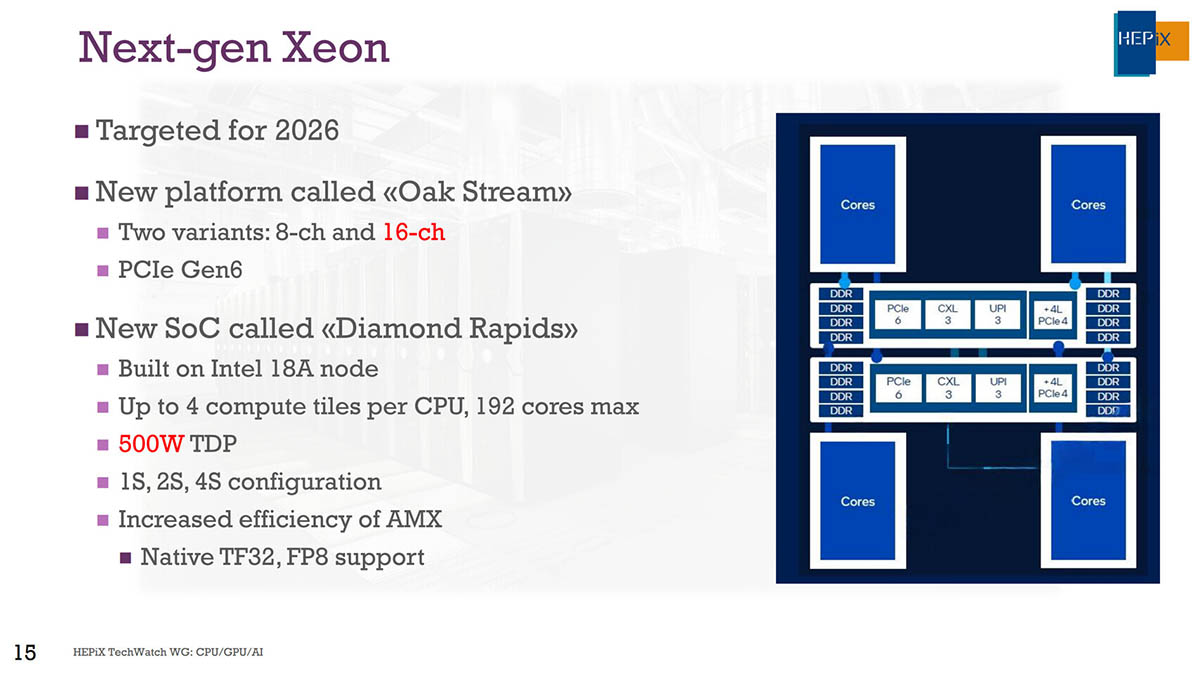Intel plans to launch its next-generation Xeon platform, codenamed Oak Stream, in 2026, which will include Diamond Rapids, a CPU built for servers and high-performance workloads.
Diamond Rapids will use Intel’s 18A process and Panther Cove cores, the same architecture coming to future consumer chips.
The top model includes four compute tiles, each with 48 performance cores, adding up to a total of 192 cores per socket.
New socket type
With support for single-, dual-, and quad-socket configurations, that means a single rack could host up to 768 cores. That kind of density also brings challenges, particularly with power. A fully configured rack could draw a whopping 2000W.
Intel says Diamond Rapids will use a new socket type, LGA 9324. It also supports modern standards like PCIe 6.0 and CXL 3, helping the processor connect to accelerators and fast storage.
Each CPU can support up to 16 channels of DDR5 memory and MRDIMM modules running at 12800MT/s.
There will also be a version with fewer compute tiles and a single I/O module, offering half the memory bandwidth and core count. That option may suit more power- or space-conscious deployments.
Intel is also pitching this as a CPU ready for inference workloads. While most AI processing still happens on GPUs, Diamond Rapids aims to improve CPU-based inference, especially for smaller models.
Native support for formats like FP8 and TF32 should help in that space.
The CPU will also support Intel APX and an upgraded AMX engine, two instruction sets meant to improve efficiency for modern server tasks. These upgrades hint at a future where CPUs may take on more AI workloads directly.
Diamond Rapids is expected to launch alongside Intel’s Jaguar Shores AI accelerator, part of its push to build a full AI-ready server platform.
Intel hasn’t announced pricing yet, and how it stacks up against competitors like AMD remains to be seen.
Via expreview








Leave a Comment
Your email address will not be published. Required fields are marked *